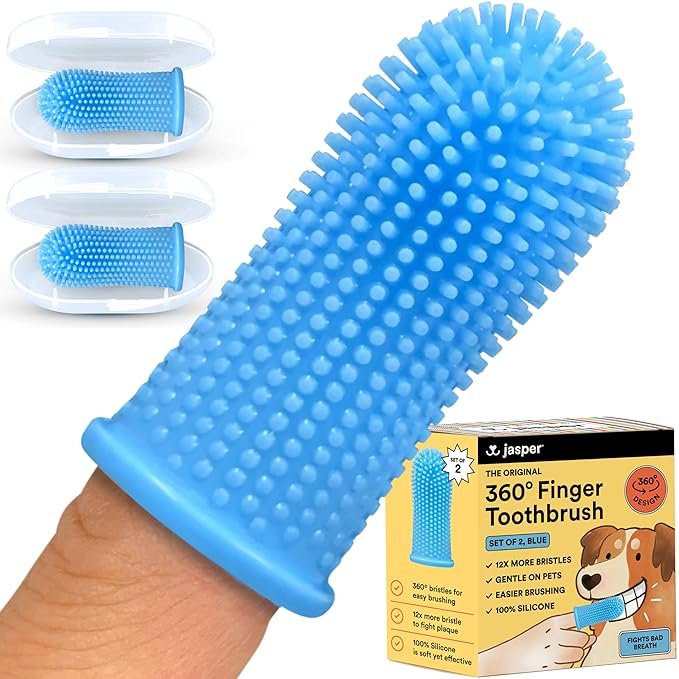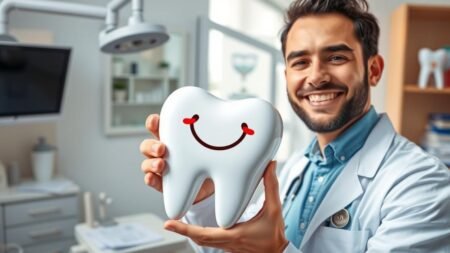As a devoted dog owner, the path to ensuring your furry companion’s vigor goes beyond regular walks and balanced diets. Integral to their overall health is a focus on dog dental health; an area often overlooked but critical to their well-being.
A dog dental chart isn’t just a tool for veterinarians—it’s a fundamental guide that empowers you to maintain optimal canine oral care. This introduction lays the groundwork for recognizing the importance of dental health in dogs and how tracking it can prevent serious health issues down the line.
Understanding the Importance of Canine Dental Health
Maintaining canine dental health is not just about ensuring a bright smile; it’s crucial for the overall well-being of your dog. Just like humans, dogs experience a variety of dog teeth problems that can lead to significant discomfort and even systemic health issues if left unchecked.
By exploring the unique characteristics of canine teeth, understanding the common dental issues that plague dogs, and recognizing the signs of dog dental issues, you can take proactive steps to safeguard your pet’s oral health.
What Makes Canine Teeth Unique?
Dogs possess a set of teeth that are perfectly adapted for their dietary needs. Different in structure from human teeth, canines are designed to tear meat and grind bones.
This dentition supports their carnivorous predisposition, making the preservation of canine dental health paramount to their ability to consume the diet nature intended for them.
Common Dental Issues in Dogs
Despite their specialized design, dog teeth are vulnerable to a host of issues. Periodontal disease remains the most prevalent, affecting a majority of dogs by the time they reach three years of age. Left untreated, this condition can lead to tooth loss, abscesses, and can even contribute to heart, liver, or kidney diseases.
Other dog teeth problems include tooth decay, broken teeth, and misalignment, all of which can significantly impact a dog’s oral and overall health.
Signs of Dental Problems in Canines
Being vigilant about the signs of dog dental issues is your first line of defense against more serious health concerns. Look out for symptoms such as bad breath, difficulty eating, swollen gums, and visible tartar buildup.
Behavioral changes, like a sudden reluctance to play with chew toys, can also indicate dental discomfort. Early detection through routine observations can facilitate prompt veterinary intervention, ensuring your dog doesn’t suffer in silence.
Exploring the Dog Dental Chart
Delving into a dog dental chart is akin to uncovering a roadmap to your pet’s oral health. As you embark on this journey, you’ll gain insights into the labyrinth of puppy teeth and the varied types of canine teeth, each serving a pivotal role in your dog’s life.

Anatomy of a Dog’s Mouth
Embarking on a foray into the anatomy of a dog’s mouth reveals a complex tapestry woven from various teeth, each type designated for specialized functions.
Beyond the gleam of white that catches your eye as your pooch grins, lies an array of incisors, canines, premolars, and molars. These elements are critical to understanding the dog dental chart—a guide to your furry friend’s dental needs.
The Timeline of Puppy to Adult Teeth
Every dog owner fondly remembers the tiny nips of puppy teeth, but these milk teeth are temporary residents in a pup’s mouth. By familiarizing yourself with the timeline from puppy teeth to adult teeth, you track the milestones in your dog’s developmental journey.
As they transition, each tooth finds its place, paving the way for a full-fledged adult set that’s equipped for munching, crunching, and everything in between.
Decoding the Chart: Types of Teeth and Their Functions
The dog dental chart serves as a decoder ring, demystifying the specifics behind the types of canine teeth. Incisors, the scouts of the mouth, lay the groundwork for food capture.
The pointed canines follow, providing a firm grip, while the versatile premolars tear, and molars grind down the kibble. This understanding is crucial, as each tooth type reflects on your dog’s dietary patterns and health behaviors.
Preventative Dental Care for Dogs
Embracing a proactive approach to dog dental care is crucial for your pet’s overall health. It not only secures a gleaming smile but also wards off potential health issues down the line.
In this section, we’ll explore some effective strategies you can implement right at home, along with the integral role of professional interventions.
Brushing Your Dog’s Teeth: Techniques and Tips
Establishing a routine for brushing dog teeth is a foundational element of oral hygiene. Start by choosing toothbrushes designed specifically for dogs – they come in various sizes to cater to different breeds.
When selecting toothpaste, avoid human varieties as they can be harmful; instead, opt for enzymatic toothpaste made for canines. Begin by introducing your dog to the taste and sensation, and then gently brush in a circular motion, focusing on the gumline where plaque tends to accumulate.

Dog Toothbrush, 360º Dog Tooth Brushing Kit, Cat Toothbrush, Dog Teeth Cleaning, Dog Finger Toothbrush, Dog Tooth Brush for Small & Large Pets, Dog Toothpaste Not Included – Blue 2-Pack
SAFE & EFFECTIVE – 100% Silicone is BPA and Phthalate-free.
Dental Treats and Diets
- Dental treats for dogs are not merely an indulgence; they are a part of a vital dental regime. These treats are formulated to reduce tartar and freshen breath.
- Consider including dental diets in their meals that have been scientifically designed to scrub teeth as your dog chews, which can significantly diminish the risk of dental disease.
Professional Dental Cleanings: What to Expect
Alongside home care, professional canine dental cleanings are an indispensable component of your dog’s oral hygiene. Performed under anesthesia, these cleanings offer a thorough assessment and cleaning that includes scaling and polishing. Your vet will also be able to detect any underlying conditions that may be developing unnoticed.
| Service | What’s Included | Benefits |
|---|---|---|
| Pre-Clean Checkup | Evaluation of overall dental health | Identifies early signs of issues |
| Anesthesia | Safety and comfort during the cleaning | Allows for a more thorough cleaning |
| Scaling and Polishing | Removal of tartar and plaque, smooth teeth surface | Reduces the risk of periodontal disease |
| Post-Clean Treatment | Fluoride treatment or dental sealants | Strengthens and protects teeth |
Remember to schedule regular check-ups with your vet to ensure you’re on the right track with your dog’s dental care plan. They can provide tailored advice and suggest how often your furry friend should have a professional cleaning based on their specific needs. Investing the time and effort into preventative measures today can help secure your dog’s health and happiness for years to come.
Using the Dog Dental Chart in Oral Health Diagnosis
As a meticulous pet owner, you understand that your dog’s oral health is a direct reflection of their overall well-being. Empowering yourself with the knowledge of how to use a dog dental chart can significantly enhance your ability in canine oral health diagnosis.
A dental chart serves as a map to your dog’s mouth, outlining every tooth and the potential issues that could arise at each dental site. With this chart at your disposal, spotting dog dental chart abnormalities becomes a clearer task, helping you recognize when your furry friend might need professional care.
Reading the Chart: Identifying Abnormalities
When observing the dental chart, you should look for signs of wear, damage, discoloration, and misalignment. Each abnormality can be a silent testament to various conditions – from gingivitis to more severe periodontal disease.
By familiarizing yourself with the normative structure and appearance of canine teeth, indicated on the chart, you can detect changes early and seek professional advice. This proactive approach is instrumental in preventing minor issues from escalating into major health concerns that could impair your dog’s quality of life.
Veterinary Procedures Utilizing the Dental Chart
Veterinarians rely on the dental chart as an essential tool in a variety of veterinary dental procedures. It guides them during routine check-ups and is indispensable in surgeries and extractions. The chart’s detailed layout enables pinpoint precision in diagnosing and treating dental ailments.
Whether it’s routine care or emergency intervention, these charts assist vets in delivering tailored treatments, ensuring that your dog’s dental care is not just effective but also safe.
How Vets Gauge Canine Dental Age
Aside from identifying and treating dental anomalies, the dog dental chart is a key instrument in estimating your dog’s dental age. Canine dental age is gauged by examining the level of wear and tear on the teeth, the growth pattern of adult teeth, and the general oral health condition depicted in the chart.
With these insights, your vet can deduce the maturity of your dog’s dentition, which is pivotal in determining the appropriate dental care regimen necessary for maintaining optimal oral health over the course of their life.
FAQ
Why is a dog dental chart important for my dog’s health?
A dog dental chart is a crucial tool in monitoring and maintaining your dog’s oral hygiene. It helps to identify any potential dental issues early on and ensures that you and your vet can track the development and health of your dog’s teeth, ultimately impacting their overall well-being.
What are the most common dental problems in dogs?
Common dental issues in dogs include periodontal disease, tooth decay, tooth fractures, and gingivitis. These conditions can lead to more serious health problems if left untreated.
What are the signs my dog may have dental problems?
Some signs of dental problems in dogs include bad breath, difficulty eating, red or swollen gums, loose or missing teeth, and changes in chewing habits. If you notice any of these signs, it’s important to consult a veterinarian.
What’s the difference between a puppy’s teeth and an adult dog’s teeth?
Puppies start with a set of deciduous teeth, also known as baby or milk teeth, which are later replaced by permanent adult teeth as they grow. Adult dogs have a different number and types of teeth than puppies, which are suited for their dietary needs.
How can I effectively brush my dog’s teeth?
Brushing your dog’s teeth involves selecting a toothbrush designed for dogs and using veterinary-approved toothpaste. Use gentle, circular motions, focusing on the plaque-prone areas and being careful with the gum line. Consistency and patience are key.
Are dental treats effective for maintaining my dog’s oral health?
Dental treats can be an effective part of your dog’s oral hygiene routine by helping to reduce plaque and tartar buildup. However, they should complement regular teeth brushing and not replace professional dental care.
What happens during a professional dental cleaning for my dog?
During a professional dental cleaning, your dog will be put under anesthesia, and a veterinarian will perform a thorough cleaning of the teeth, including scaling to remove plaque and tartar, and polishing. The vet may also perform dental X-rays and extractions if necessary.
How do vets use the dog dental chart in oral health diagnosis?
Vets use the dog dental chart to identify and record any abnormalities in the teeth or gums. It helps them track changes over time, make decisions about necessary treatments, and provide accurate dental care.
What can the condition of my dog’s teeth tell about their age?
The condition of a dog’s teeth can provide clues to their age. Veterinarians look for signs like wear and tartar buildup, as younger dogs tend to have cleaner, whiter teeth with less wear compared to older dogs.
Are certain dog breeds more prone to dental issues?
Yes, some dog breeds are more predisposed to dental problems due to genetics, mouth shape, and size. Smaller breeds, for instance, tend to have more crowded teeth, which can lead to increased plaque buildup and dental disease.









3 Comments
Pingback: Best Toothbrush for Dogs: Oral Care Essentials
Pingback: The Best Dog Toothbrushes for Healthy Pet Smiles
Pingback: Dog Dental Cleaning Cost: What to Expect